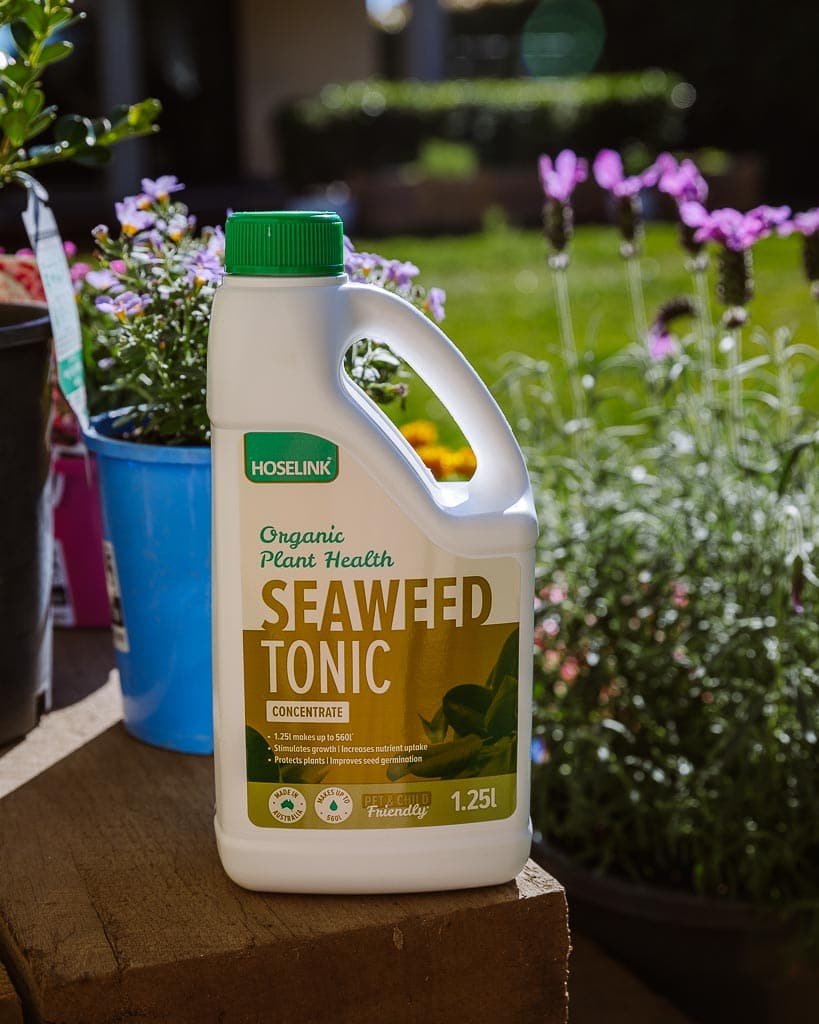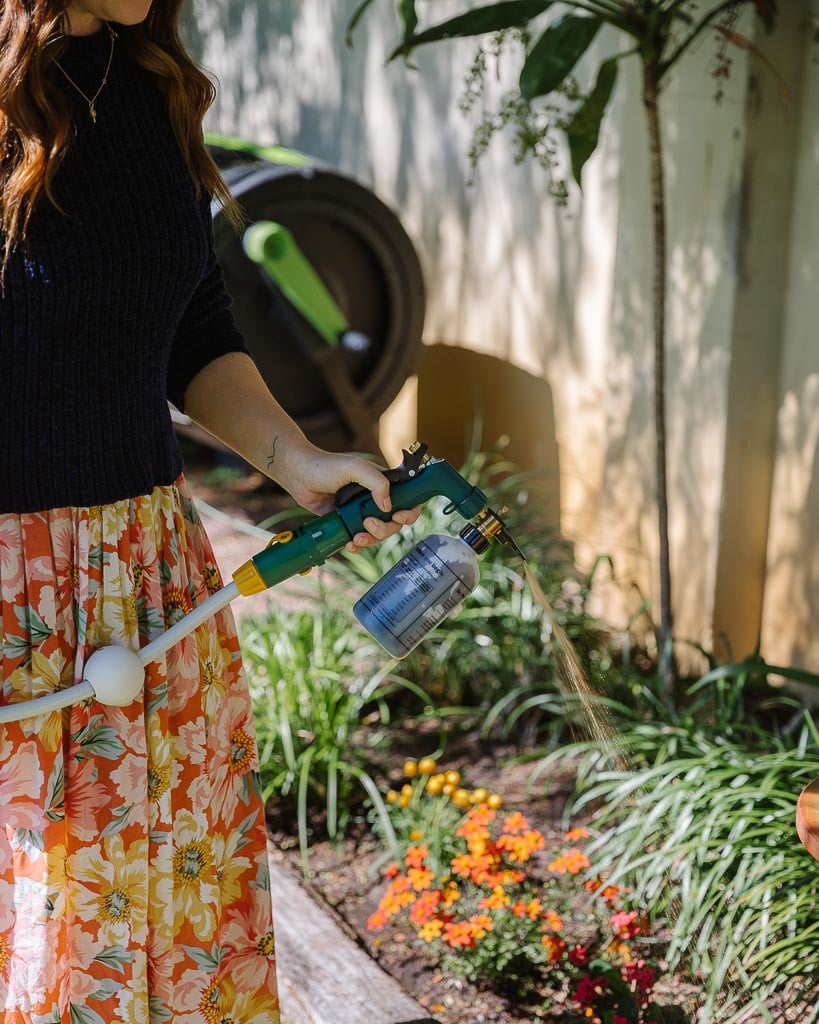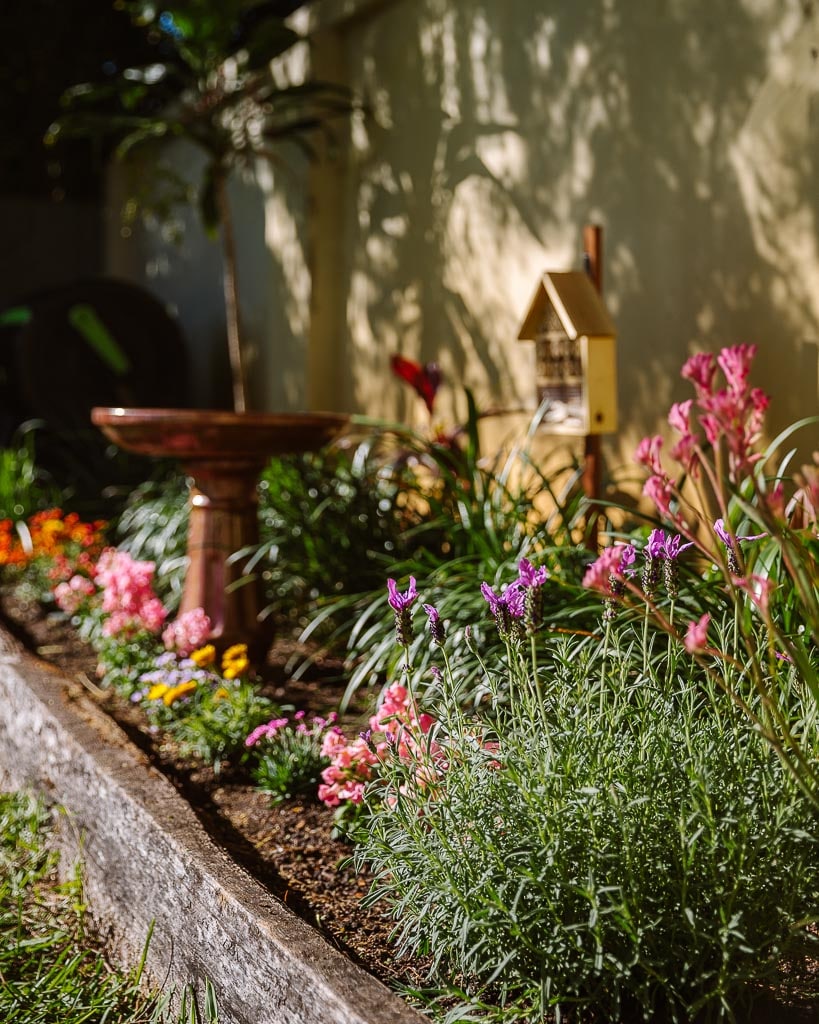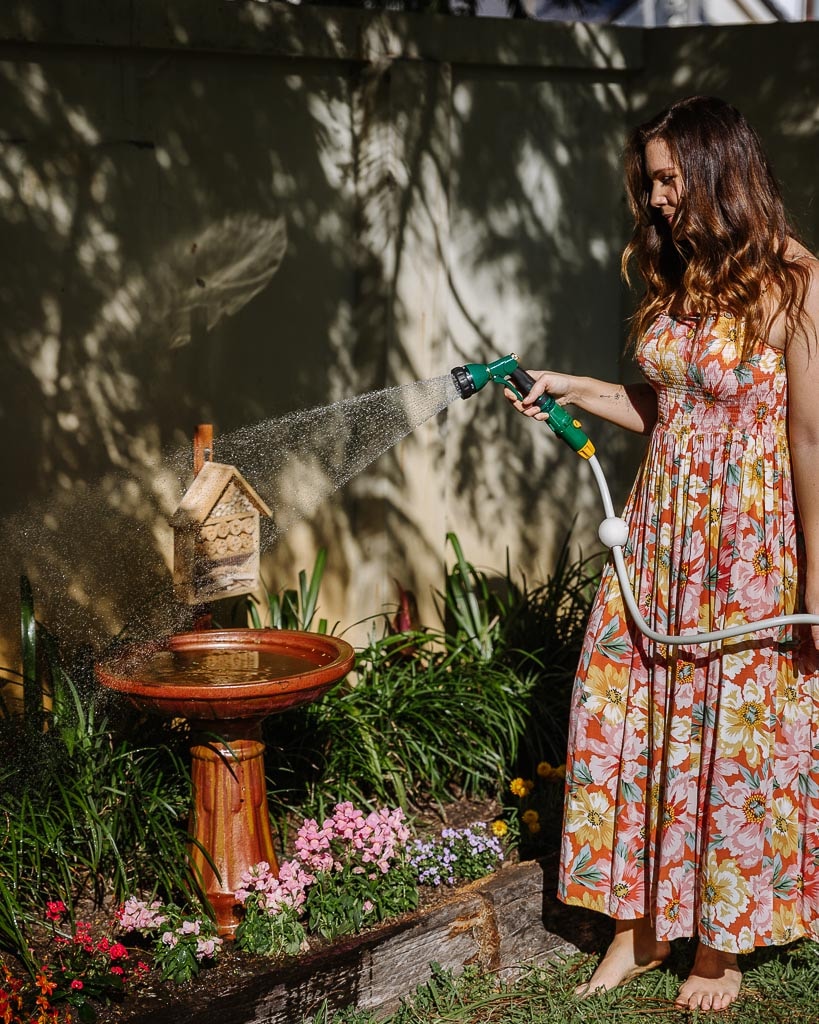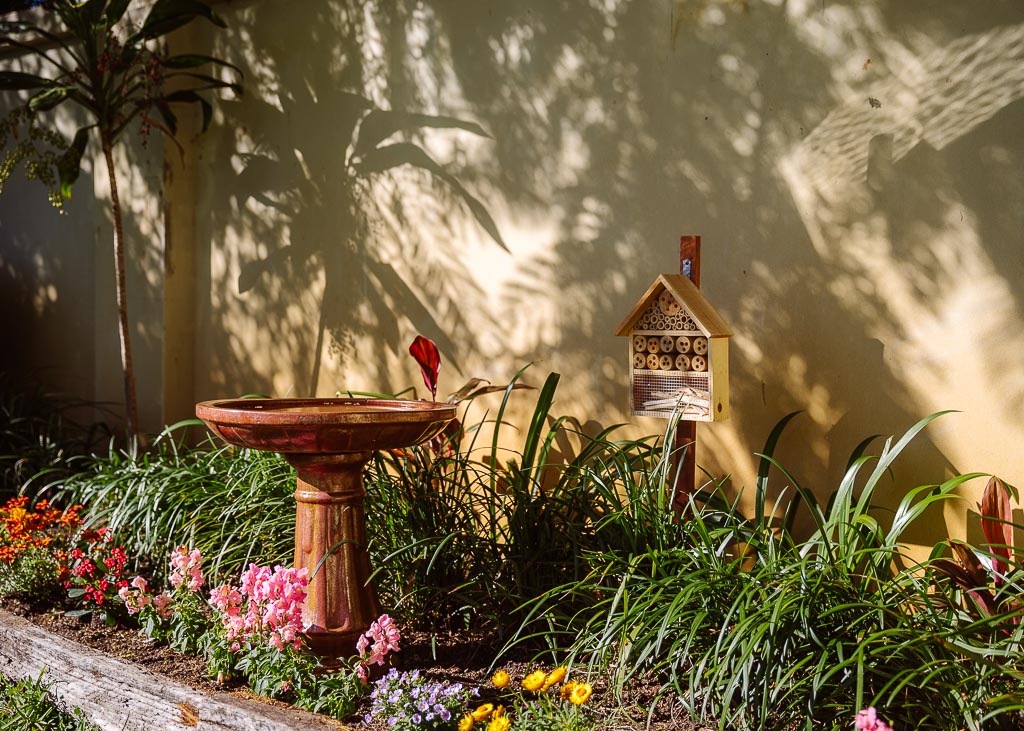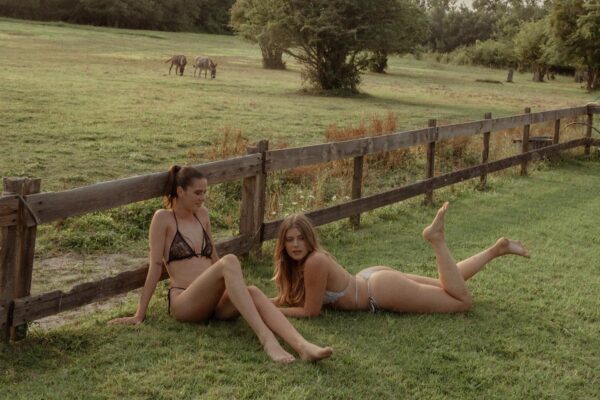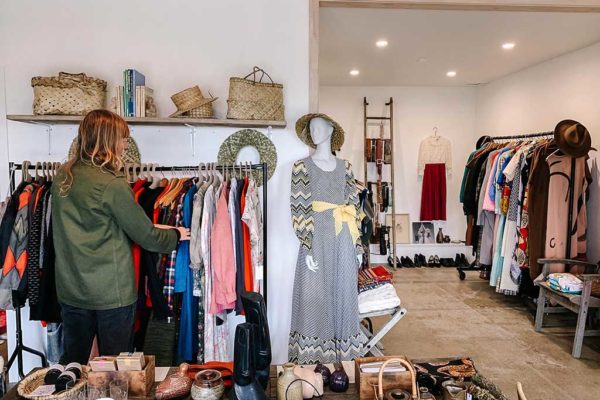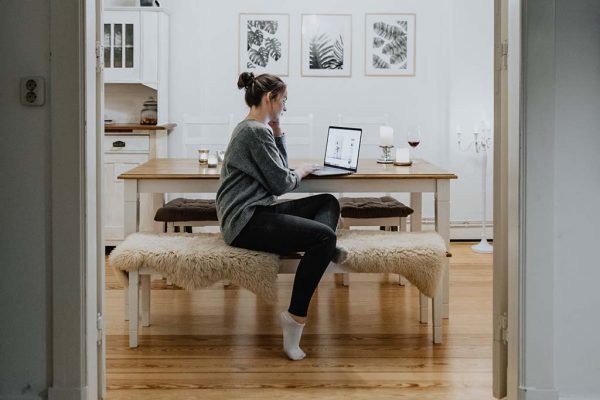Since starting a small veggie garden a few months ago I’ve been wanting to create another garden project, this time a flower bed hoping to attract more pollinators to the yard.
Pollinators are vital to the success of veggies gardens as so much of what we grow relies on bees and other insects. And due to threats like climate change, sadly bee populations are declining. One of the best things we can do to help bees is plant flowers.
As backyard gardeners, we play an important role in helping keep our local bee populations healthy and thriving because without bees, we would lose around 75% of our food crops. So while my pollinator garden will look pretty, it’s also helping with the bigger picture.
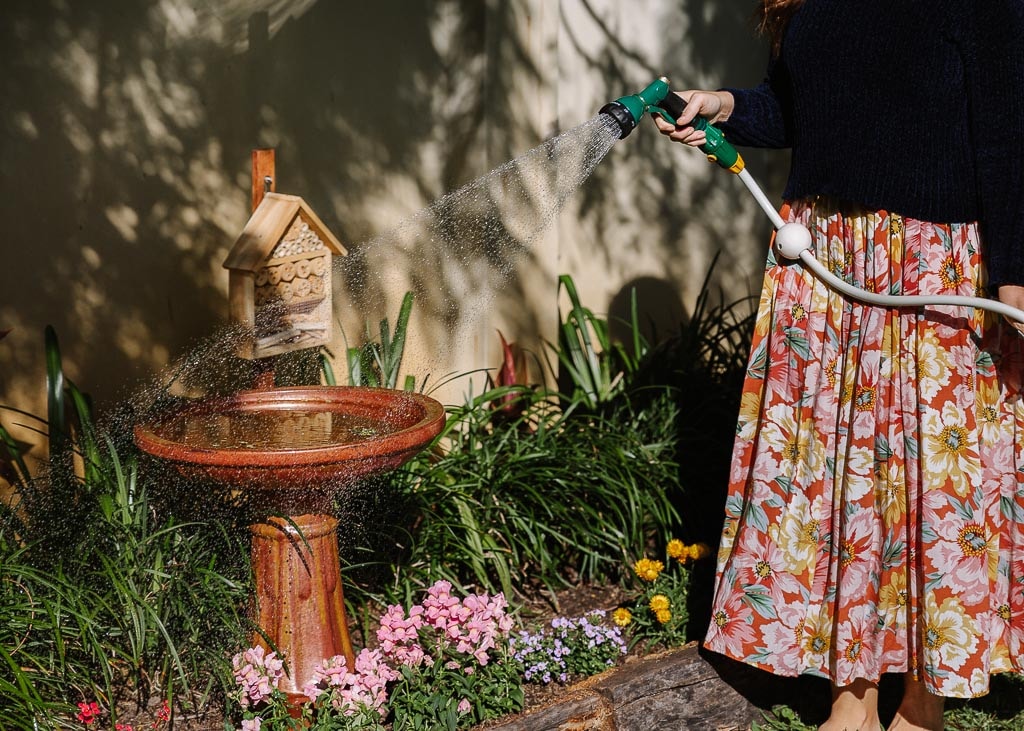
Choosing the Pollinator Flowers
I live in a rental property so I went with an existing bed and asked permission to plant some flowers. If you’re in a small space or an apartment, raised portable beds or a small vertical garden would work as well.
Initially, I wanted to go with mostly Australian natives, but the problem was that most native plants that work well in southeast Queensland are shrubs which will grow too large for the space and I was under instruction from the real estate to stick with low maintenance flowers.
So I went with flowers I liked, that would work well in the partial shade and I also followed some bees around the nursery taking note of which flowers they liked too. Bees love blues, reds and oranges.
- Anigozanthos – I bought a Kangaroo Paw because it was so lovely before realising it’s native to Western Australia so our sub-tropical climate here is not really suitable. I ended up potting this one with a special well-draining soil mix and placed the pot in the garden.
- Bracteantha bracteata – The bright yellow Paper Daisies are lovely to look at, keep to around 30cm growth and they’re hardy plants that don’t need a lot of water.
- Lavendula pendunculata ‘Senpur’ – Also known as Butterfly Lavender, this smells beautiful and bees love it.
- Euphobia milii – Gabriela Red is a native to Brazil, they thrive in our Gold Coast climate and apparently bees are very partial to the red ones.
- Bidens ferulifolia – Camp Fire Daisies – another pollinator favorite and these will clump and spread a little making a great ground cover.
- Sutera cordata – Bacopa Sky Blue – this one had a dozen native bees feeding on it at the nursery and it smells heavenly.
- Dianthus caryophyllus – Pink Kisses is a low maintenance plant, hardy in the heat and looks so pretty.
I’m also growing basil, oregano, parsley and dill, herbs that I’ll allow to flower so there’s food for the bees.
Below is the garden site which was filled with some ground covering plants, leaf litter from the overhanging tree and a lot of weeds. Time to get to work.
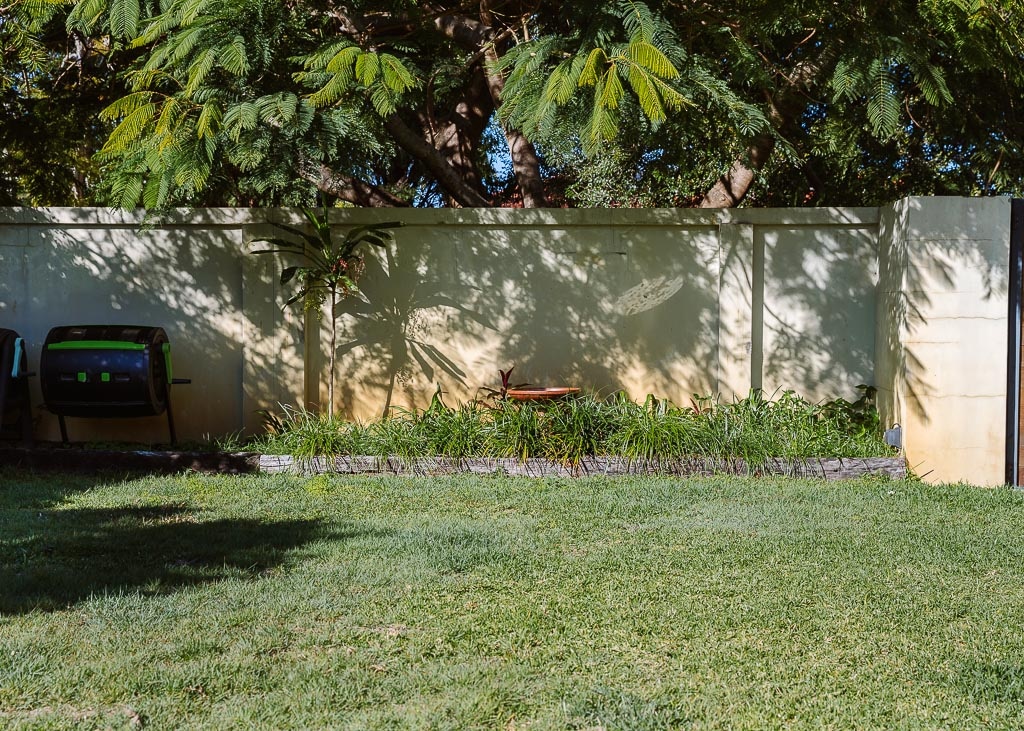
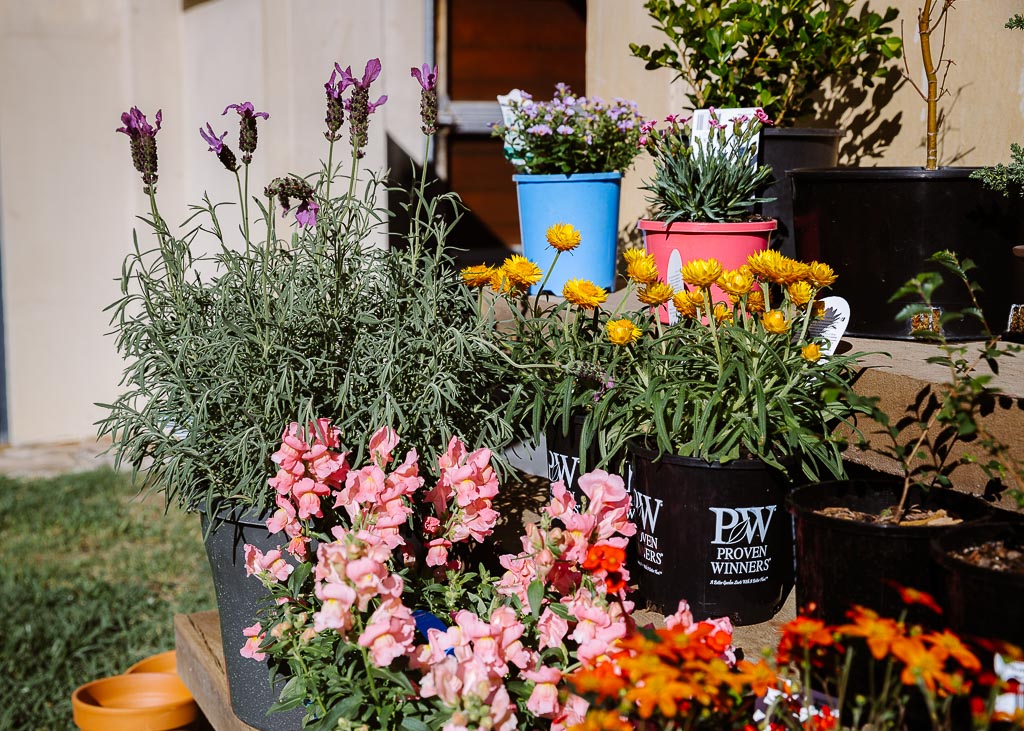
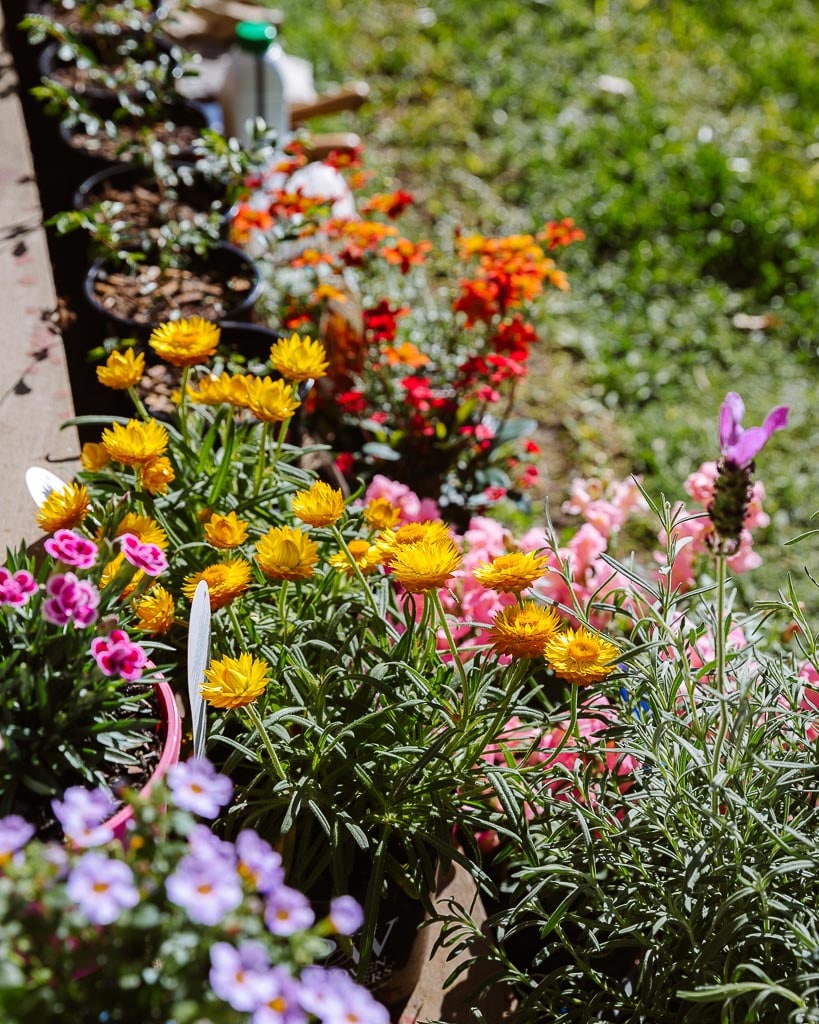
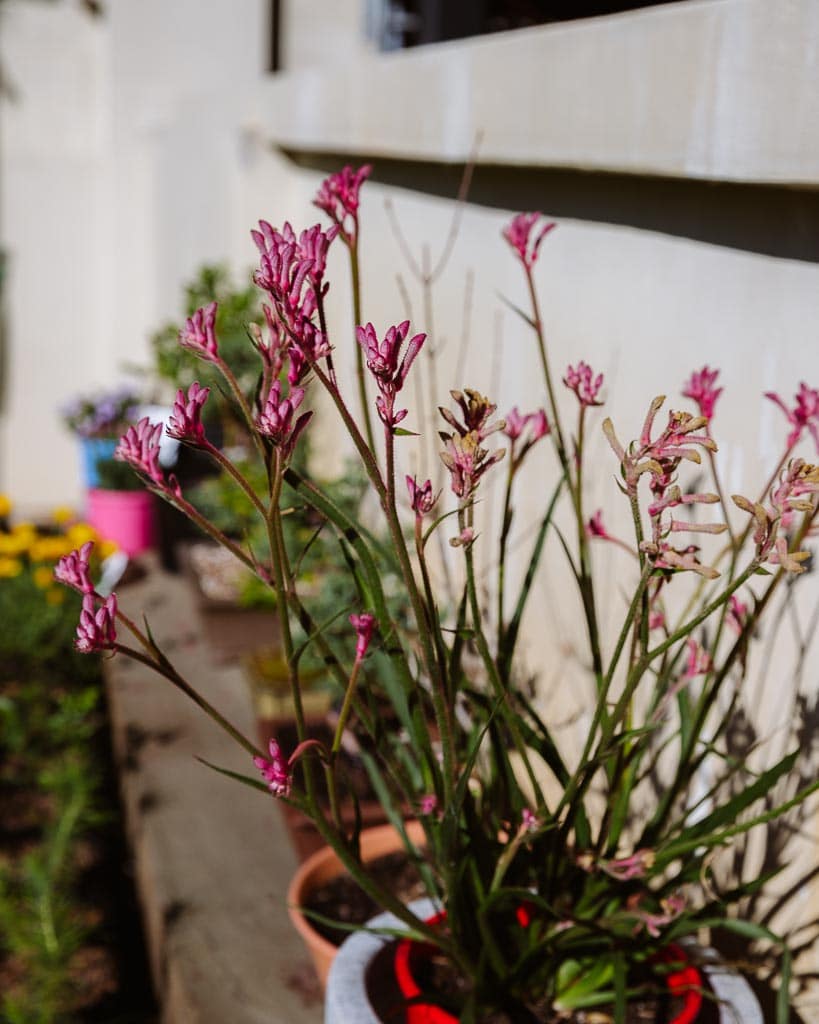
Prepping the garden bed
I started with digging out the six shrubs along the front. They didn’t go to waste, half were relocated to the right to fill the space next to the compost bins and the rest are sitting in pots on a shelf outside. Then cleared out the weeds and leaf litter and stick from the shrubs along the back.
I dug in the soil to loosen it up and added a layer of fresh compost from our compost bin then mixed it in with the shovel. It was at that dark crumbly stage and smelled sweet and earthy so it was perfect to use on the garden bed. Compost is rich with nutrients making it the perfect food for your plants.
Then the fun part, moving the flowers around while still in the pots to see where they would best look in the garden.
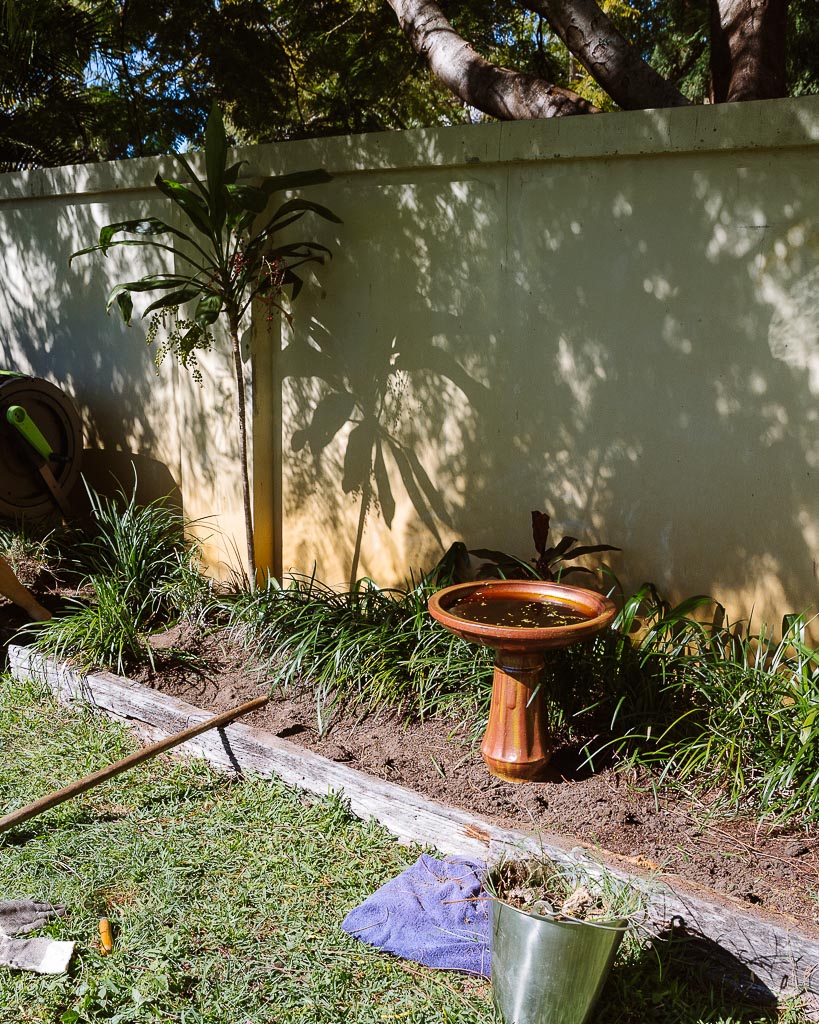
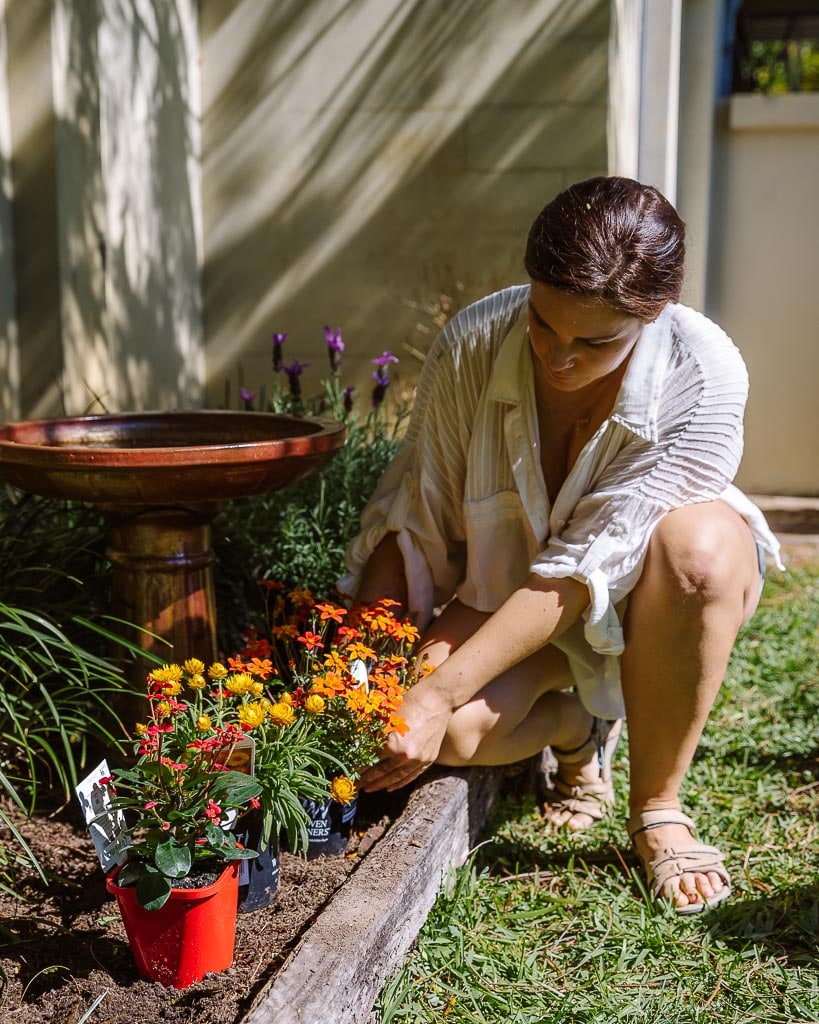
Installing the Hoselink Retractable Hose Reel
Our veggie garden beds run on an automated irrigation system but the rest of the garden is watered by hand. I can’t tell you the number of times I’ve left the hose lying on the ground because rolling it back up properly is a pain the a**.
So I’m thrilled to now own Hoselink’s Retractable Hose Reel. We went with the 20 metre hose which is the perfect size for the average yard.
The hose storage unit houses the spring-loaded hose with a specially designed ‘stop-anywhere’ locking mechanism secures the hose at any length, so no more kinks and tangles while you’re hosing. The Hose Reel also comes fully equipped and pre-fitted with Hoselink hose fittings and Metal 7 Function Spray Gun.
Installation was easy. The kit had everything we needed with a mounting bracket, drill template, leader hose, and all the fittings. Everything is set up and ready to go and it took five minutes to install.
Hoselinks hoses are made tough. They have a great reputation for quality and durability.
With UV stabilised casing, stainless-steel hardware, a premium quality hose, and no-burst hose fittings. The durable case also protects the hose to remain flexible in the cooler months and safe from the heat of the harsh summer sun.
Receive 10% off your next order using the code THEGREENHUB10
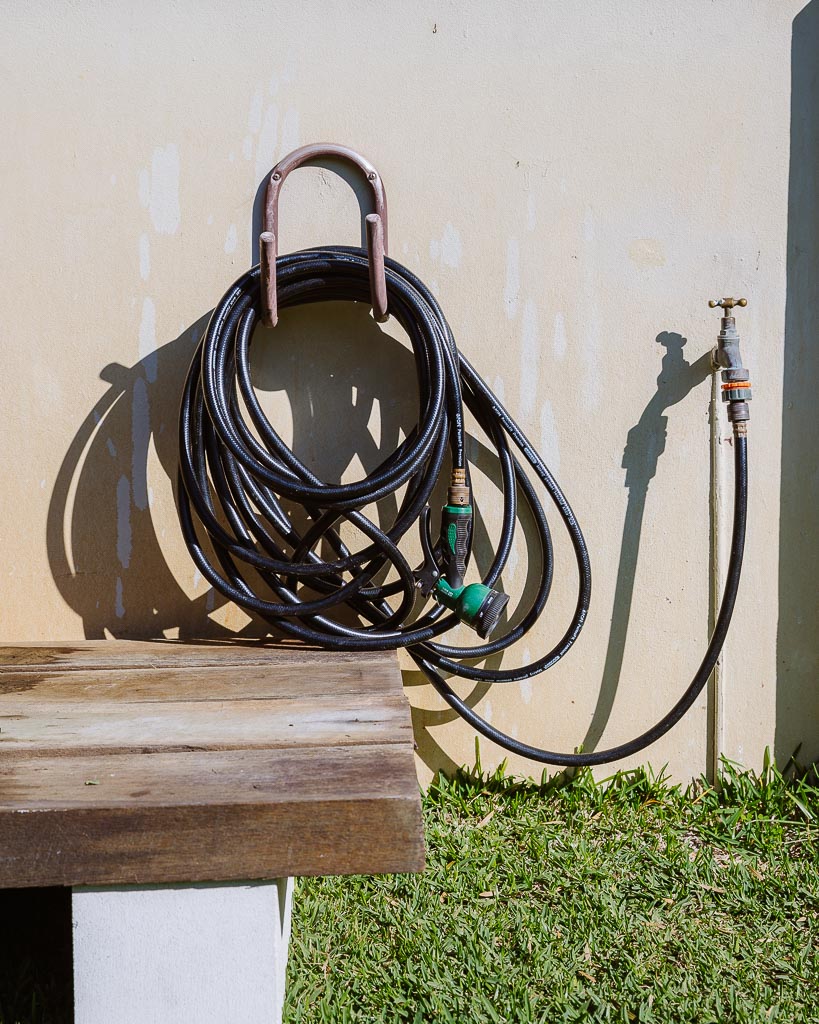
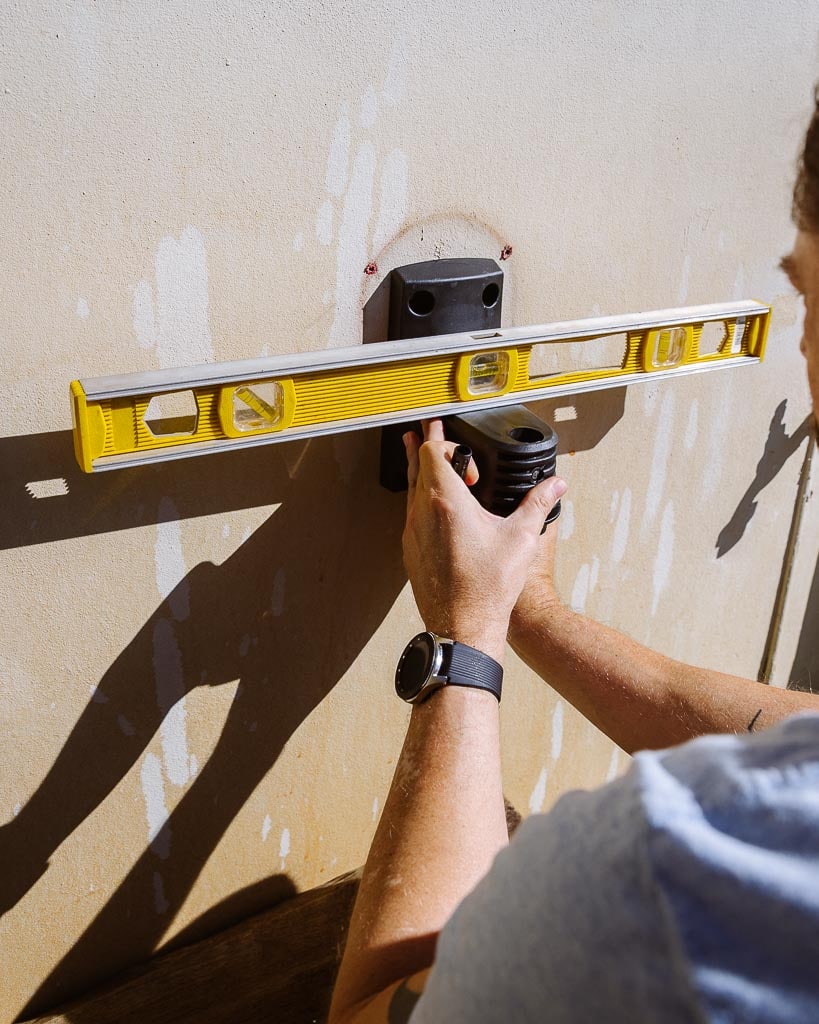
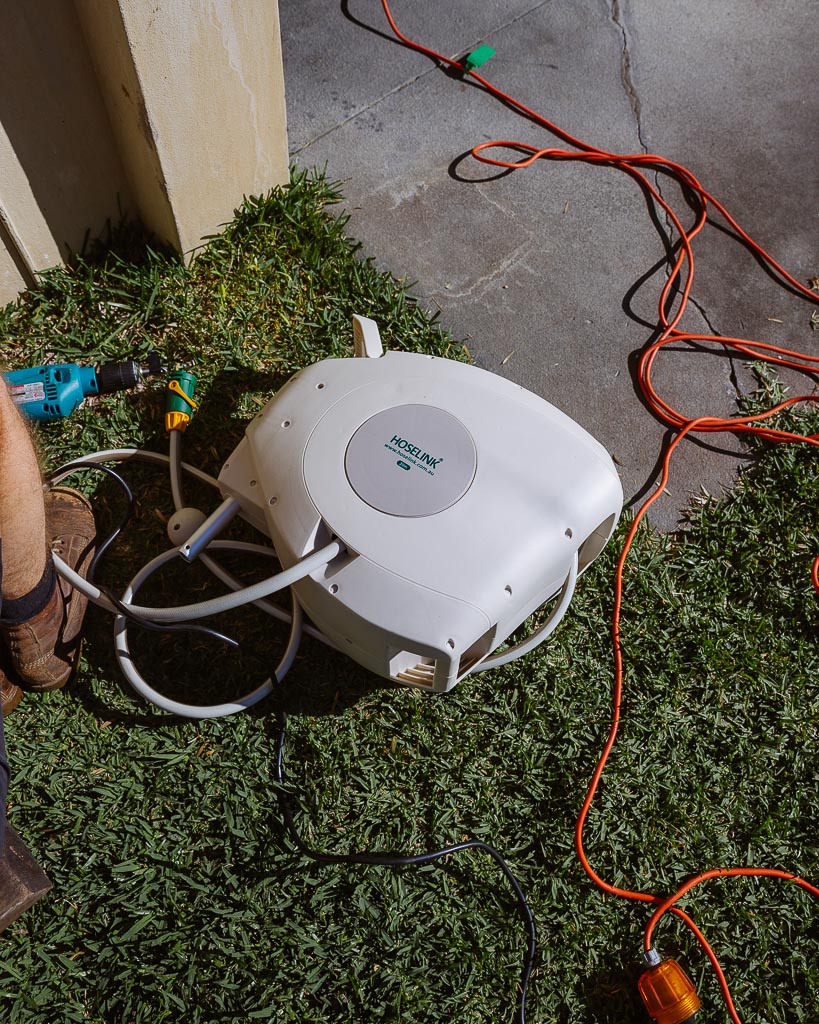
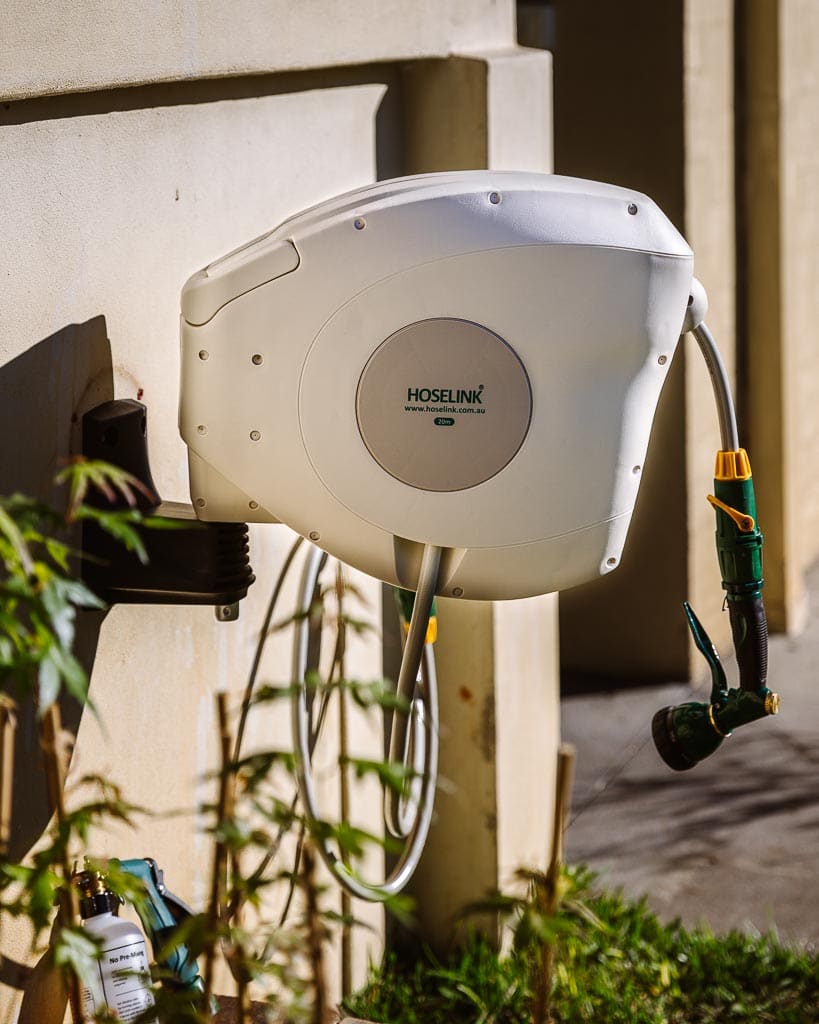
Planting and a bee hotel
Now to plant the flowers. Truth be told I found this part a little stressful as I couldn’t commit to where I wanted the flowers to go!
I decided to plant them all in a row along front knowing they will eventually spread out. I’ll see how they grow over time and might end moving some around or adding more. The goal is to have a cottage-style garden with an explosion of colour.
I also picked up this timber bee/insect hotel from the nursery and screwed it into an old piece of timber I found under the house.
Pollinators will always little nooks and crannies to shelter in, so while not completely necessary, the hotel provides and extra space for them and they look very cute in the garden. Scroll for the final reveal.
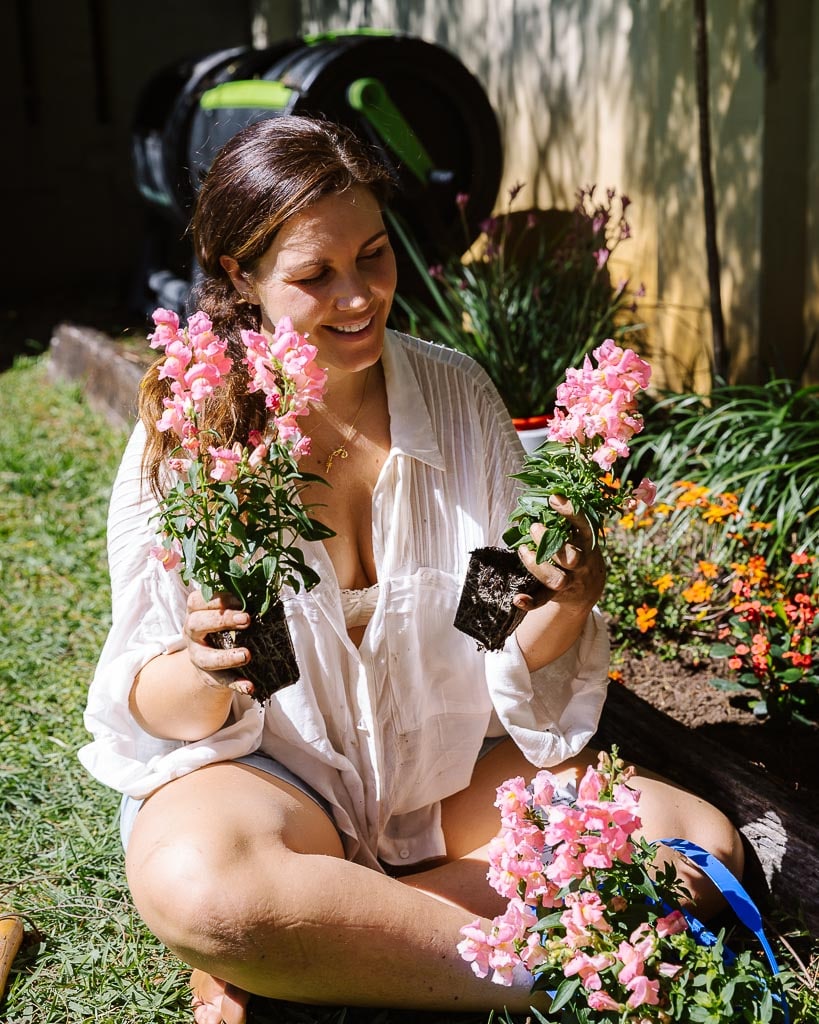
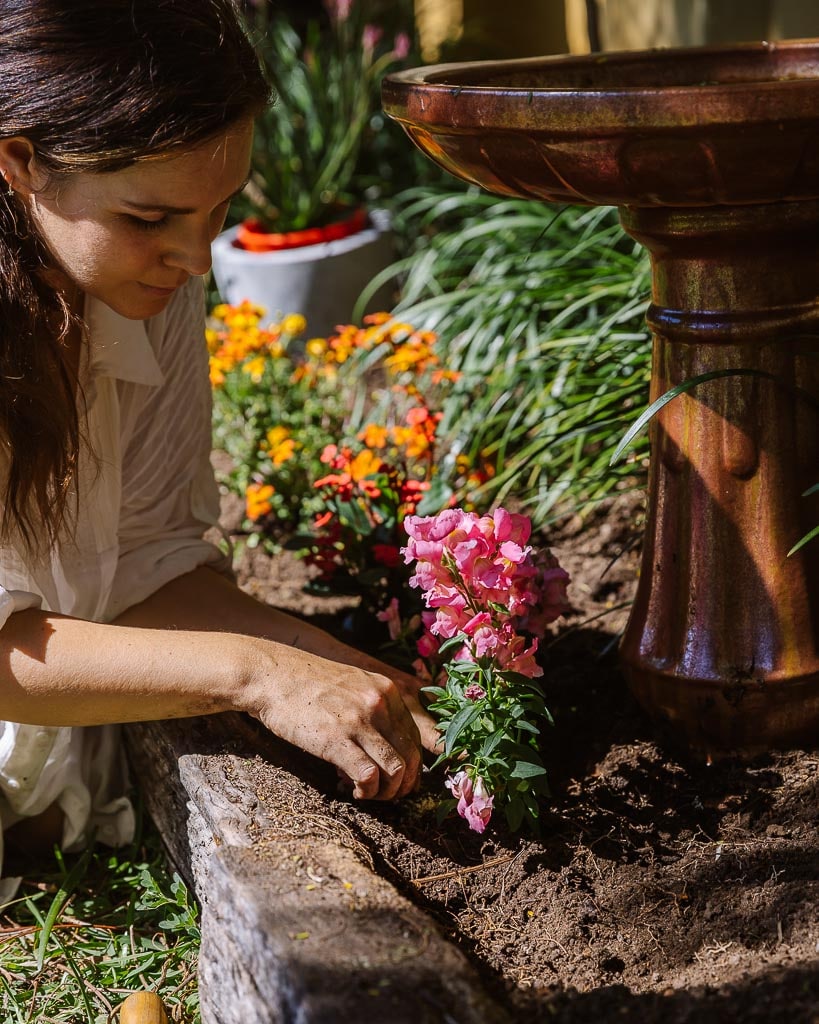
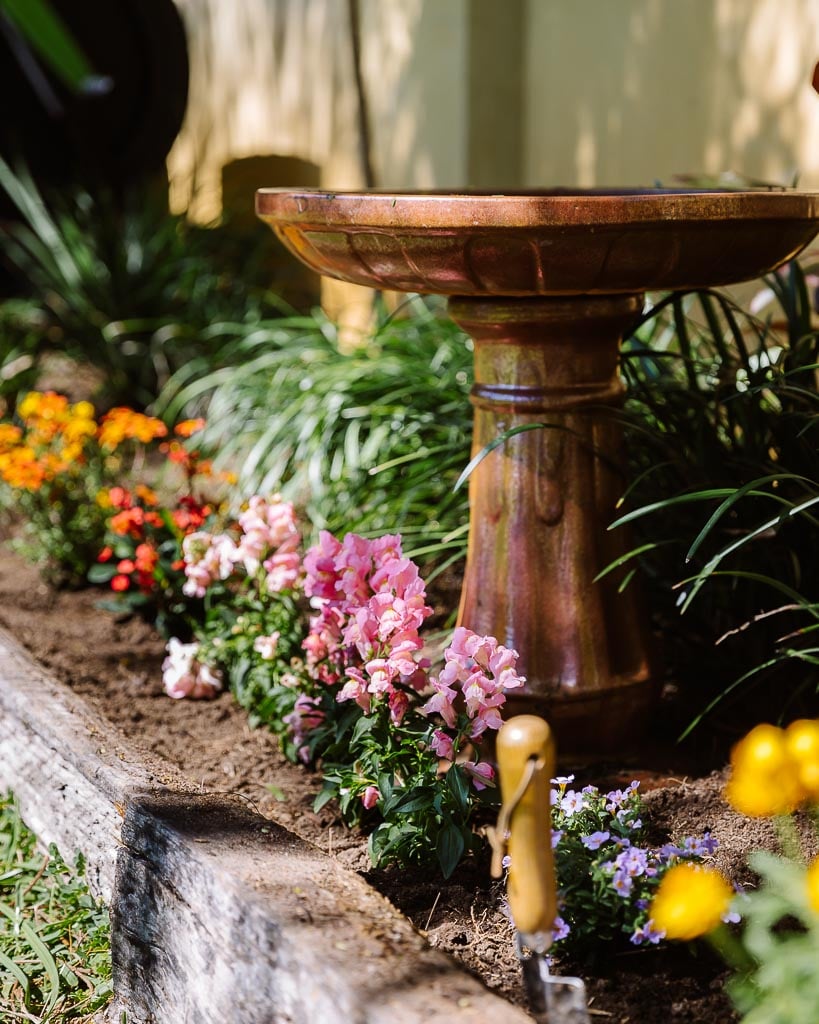
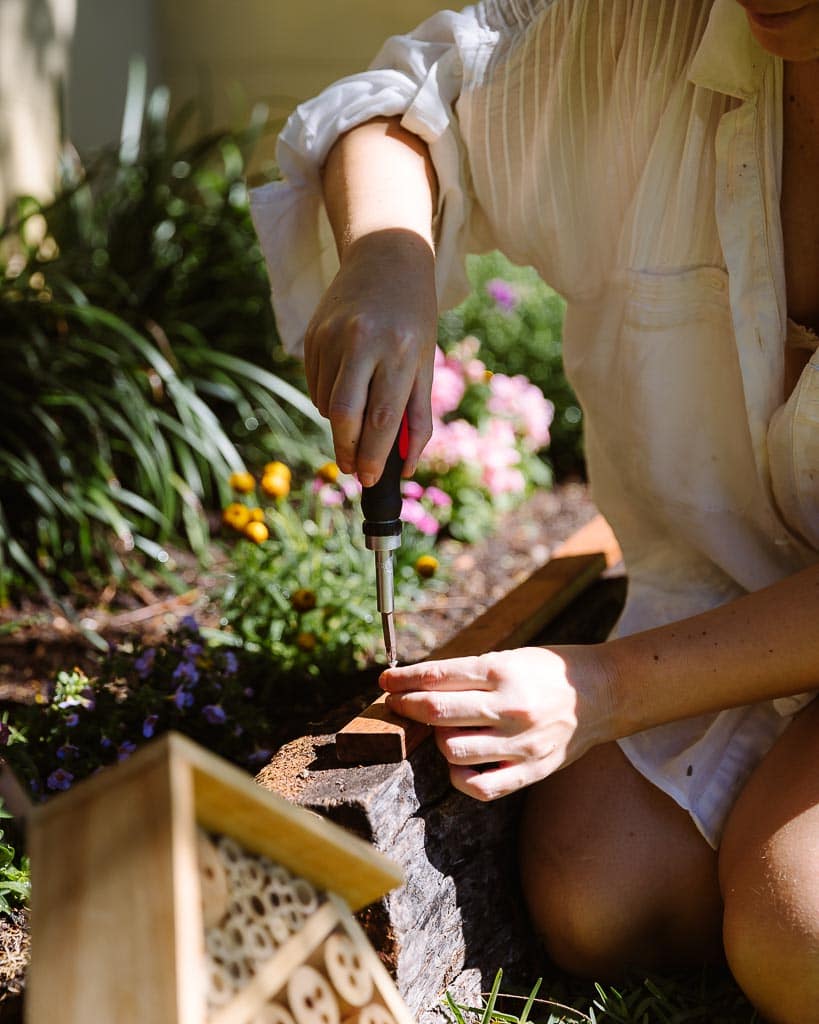
Water and feed
Finally I gave the garden a big drink and followed up with some Organic Plant Health Seaweed Tonic. The fertiliser comes with a handy spray bottle that you attach to the hose making it easy to fertilise the garden.
The tonic concentrate is made from a combination of kelp seaweed and soluble potassium humate which helps plants to grow, enriches the soil and stimulates flowering. It’s a bit stinky at first (the smell dissipates after a few minutes) but the plants love it!
And that is is my new pollinator flower garden. I’ve already popped out there half a dozen times today to admire my handy work and to see if any bees have moved in yet!
